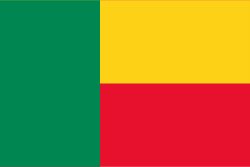
Guinea-Bissau has several offshore areas that hold good prospects for a variety of independent exploration and production (E&P) companies, as well as International Oil Companies (IOCs) that are currently operating in several of the MSGBC Basin countries including Sweden´s Svenska Petroleum, Norway´s PetroNor E&P and Australian-based FAR LTD – which is also present in The Gambia and in Senegal. The bulk of E&P activities are conducted in partnership with Petroguin EP, the national oil and gas company of Guinea Bissau, however, there is another particularly important player in Guinea´s oil and Gas sector – the Agency for Cooperation Between Senegal and Guinea-Bissau (AGC).
The AGC is an entity that reports directly to the Presidents of both countries on all oil and gas industry developments; and also has strong functional linkages with the relevant ministries – the Ministry of Petroleum and Energy in Senegal, and the Ministry of Natural Resources and Energy in Guinea Bissau.
The AGC is headquartered in Dakar, Senegal and is responsible for the undertaking of geological and geophysical studies, drilling work and activities related to exploration, and petroleum resources. Equally important, the AGC is responsible to help the marketing and promotion of all oil and gas activities in Guinea Bissau. Finally, the AGC also takes an active role in ensuring that the exploitation of these natural resources is done in a sustainable manner that ensures the control and protection of the marine environment where these offshore blocks are located.
In addition to its important role in developing regional cooperation in the oil and gas sector, the AGC also plays a role in two other highly strategic sectors for both countries, which are mining and fisheries. Guinea-Bissau is undoubtedly one of Africa’s richest countries when it comes to natural resource endowment. There are significant deposits of bauxite and phosphates in the country.
Petroleum Operations in the AGC zone began in 1958 with the Compagnie des Pétroles Total Afrique de l’Ouest (COPETAO) in Senegal and the EXXON Company in Guinea-Bissau. Initially, Petroleum Operations focused on salt domes (Dôme Flore and Dôme Gea) characterized by structural traps. These operations led to the discovery of heavy oil deposits on the Dôme Flore in 1967 and on the Dôme Gea in 1971.
In 1991, Casamance Petroleum Ltd. obtained the hydrocarbon exploration permit known as the Dôme Flore Permit and acquired a set of 3D seismic data (300 km2), on the Dôme Flore and the Dôme Gea. This permit expired in 1994 and the area was subsequently reassigned to the Pecten company, which drilled a shallow exploration well called “Boabab-1” on the eastern flank of Dome Gea in 1996. This drilling encountered the evidence of oil. From 1997 to 1999, the AGC undertook seismic studies followed by a vast campaign to promote the blocks of the deep offshore of the Common Zone in which the AGC facilitates cooperation between Senegal and Guinea Bissau.
Following this promotion campaign, two hydrocarbon exploration permits (Cheval Marin Permit and Southern Cross Permit) were awarded in the deep zones respectively to the company AGIP – a subsidiary of the multinational petroleum company Eni – and to Fusion Oil & Gaz NL, at the beginning of 2001. These two companies subsequently carried out important work of 2D and 3D seismic surveys, magnetic, gravimetric, geochemical and geological studies, in their respective permits. The AGC currently has partnerships with a number of oil and gas companies including Petroguin E&P, Oryx Petroleum, CNOOC/NEXEN, Tender Oil & Gas SARL, and Best Petroleum, among others. A future bidding round could attract even more players to the offshore blocks managed by the AGC.
Today, following the various large-scale discoveries that took place in the offshore waters of Senegal (SNE, SAGOMAR) and the border with Mauritania (GTA) from 2014-2017 there has been renewed interested throughout the region in developing the hydrocarbon potential of the MSGBC Basin, which is still largely under explored. The offshore blocks that the AGC is in charge of managing and promoting for future bidding rounds currently have a number of medium sized E&P companies analyzing the seismic data obtained and prospecting for oil and gas, but both Guinea-Bissau and its partners in Senegal are interested in attracting new investors, and potentially partnering with IOC´s in order to help potentially finance a more aggressive exploration and drilling campaign.
In response to growing demand for renewable power, and increasing interest by international stakeholders to invest, develop, and succeed in Africa, Energy Capital & Power will hold the MSGBC Oil, Gas, & Power 2021 conference and exhibition on the 2-3 December 2021. Focused on enhancing regional partnerships, spurring investment and development in the oil, gas and power sectors, the conference will unite regional international stakeholders with African opportunities, serving as a growth-oriented platform for Africa’s energy sector.
This article was written by Miguel Artacho and distributed by APO Group. You can start earning money by becoming our Independent Reporter or Contributor. Contact us at IR@downtownafrica.com
Want to read more about the Africa other media don’t usually focus on? Go to [https://downtownafrica.com/subscribe/]
































